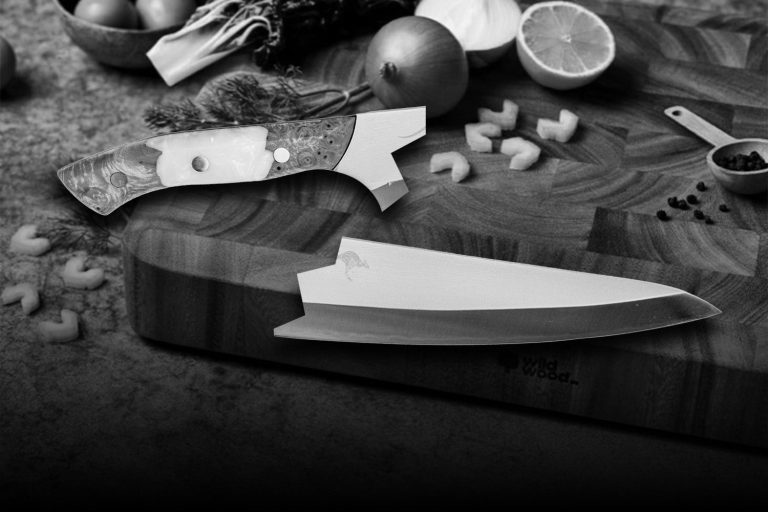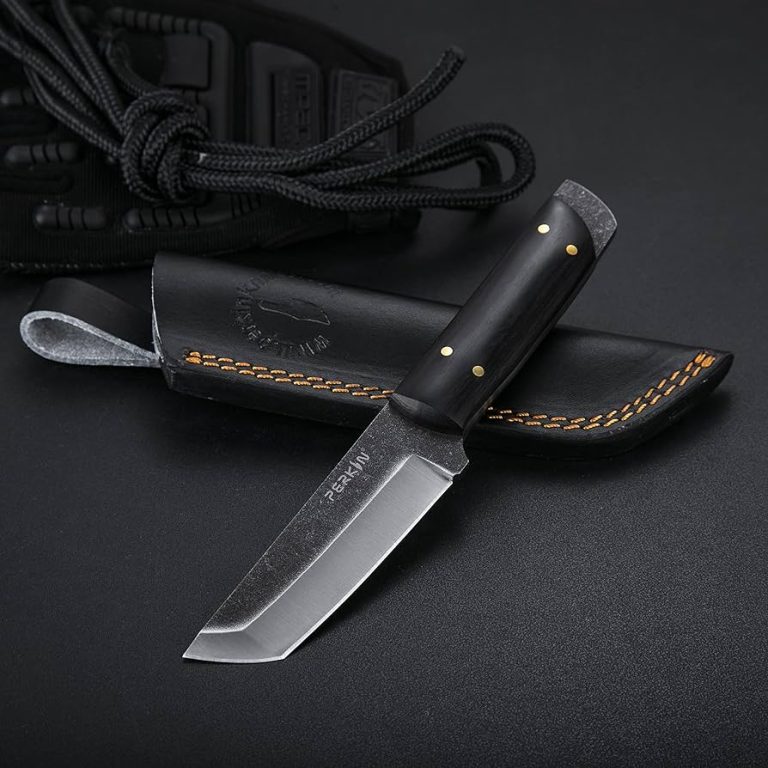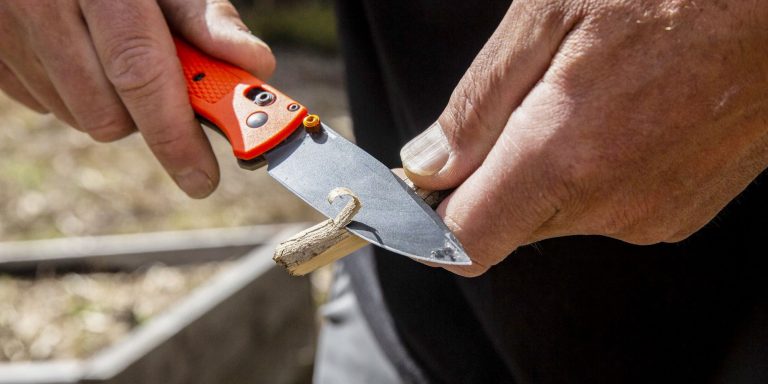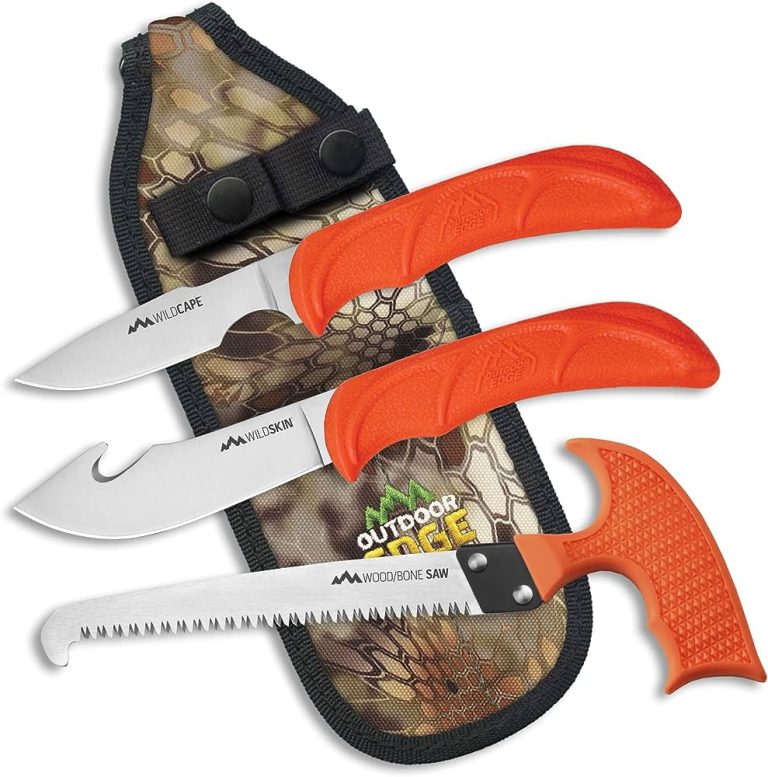Fishing Knife Sharpening Techniques
Fishing knife sharpening techniques involve using a fine-grit sharpening stone or a honing rod to maintain the knife’s sharpness. These techniques help anglers to quickly and efficiently prepare their catch while reducing the risk of accidents caused by dull blades.
Sharpening your fishing knife regularly is essential for ensuring clean cuts and optimal performance during field work and food preparation. By following the correct techniques, you can prolong the lifespan of your fishing knife, saving you time and money in the long run.
We will explore different methods to sharpen your fishing knife effectively, offering step-by-step instructions to help you achieve superior results. So, let’s dive in and learn how to sharpen your fishing knife like a pro.
Choosing The Right Sharpening Stone
When it comes to sharpening your fishing knife, choosing the right sharpening stone is essential. There are different types of sharpening stones available for maintaining the sharpness of your knife. One commonly used type is the whetstone, which comes in different grit sizes. The best sharpening stone grit for fishing knives is usually between 1000-3000 grit, as it helps establish a balance between sharpness and durability. It is important to properly maintain your sharpening stones to ensure their effectiveness. Cleaning the stones after each use and flattening them regularly are necessary steps to extend their lifespan. Regularly checking and replacing the stone if it’s worn out is also important for obtaining optimal sharpening results. By choosing the right sharpening stone and properly maintaining it, you can ensure that your fishing knife remains sharp and efficient for your outdoor adventures.
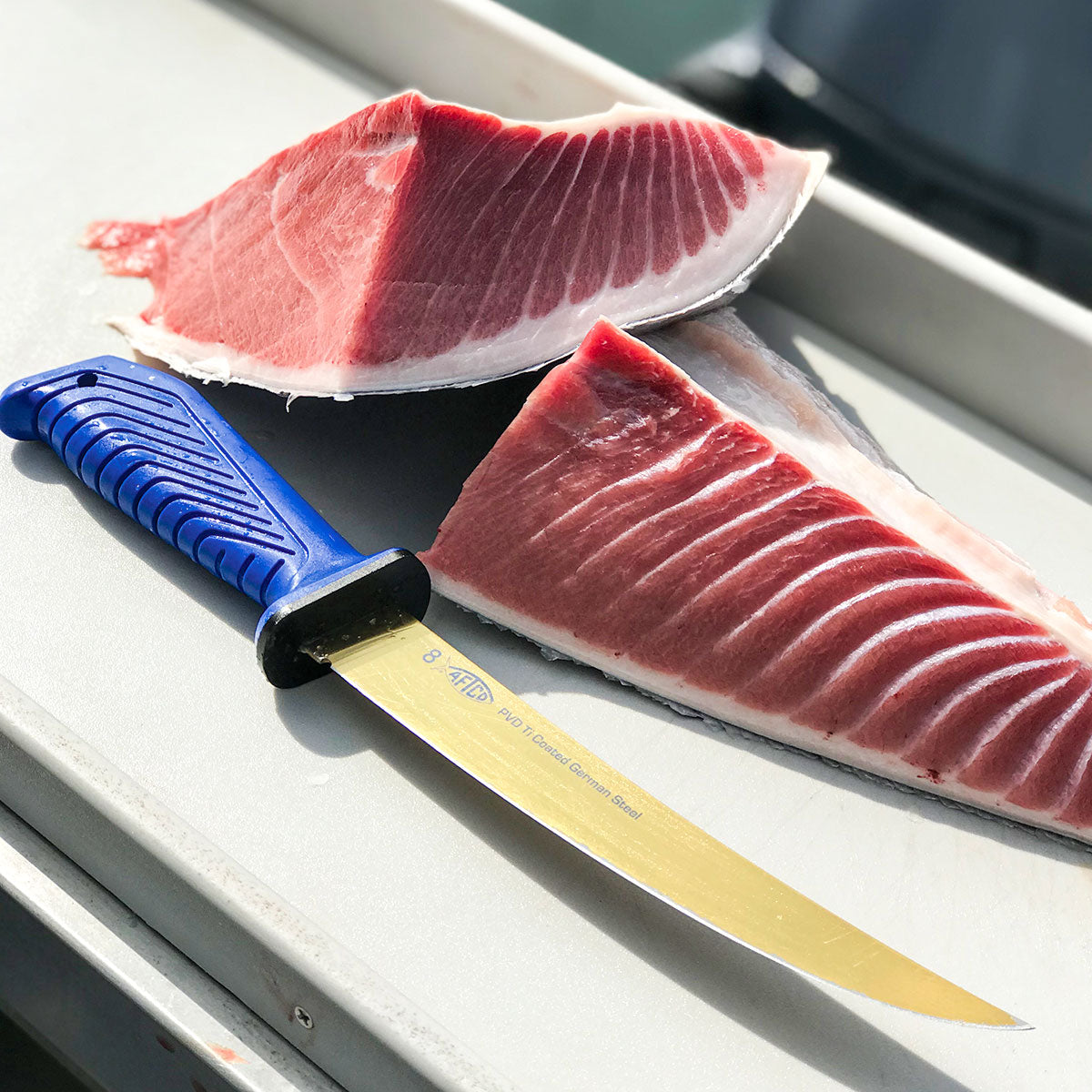
Credit: www.aftco.com
Basic Knife Sharpening Steps
To successfully sharpen your fishing knife, you need to gather the necessary tools, prepare the knife for sharpening, and understand the correct sharpening angle for optimal results. Different types of blades require different sharpening techniques.
Gathering the necessary tools
- A sharpening stone or honing rod
- Lubricating oil or water
- A clean cloth or towel
Preparing the knife for sharpening
Start by cleaning the knife thoroughly and ensuring it is dry. Inspect the blade for any nicks or damages. If necessary, use a file to remove any noticeable imperfections.
Correct sharpening angle
Identify the correct angle for your knife. Most fishing knives require a 20-degree angle. You can use a sharpening guide or visually estimate the angle.
Sharpening techniques for different types of blades
For serrated blades, use a triangular sharpening rod and follow the contour of the serrations. For straight blades, maintain a consistent angle and move the knife across the sharpening surface in smooth, controlled strokes. Repeat the process on both sides until you achieve the desired sharpness.
Advanced Knife Sharpening Techniques
Fishing Knife Sharpening Techniques
Using a sharpening rod or honing steel is an effective method to maintain the sharpness of your fishing knife. Simply hold the rod or steel firmly and swipe the blade across it at a consistent angle. This technique helps to realign the knife’s edge and keep it sharp for optimal fishing performance.
When it comes to sharpening serrated fishing knives, a specialized serrated knife sharpener is recommended. These sharpening tools have specifically designed grooves or slots to accommodate the serrated edges. Gently slide the knife through the appropriate slot, following the serrations, to restore the sharpness of the blade.
To maintain knife sharpness while fishing, it is important to take a few extra precautions. Avoid using the knife on hard surfaces or cutting through bones, as this can dull the blade. Additionally, rinse the knife with freshwater after each use to remove any salt or debris that may cause corrosion or dulling.
Stropping is a technique that can be used to achieve a polished edge on your fishing knife. This involves using a stropping compound and a leather or canvas strop to refine the blade and remove any burrs. Simply drag the knife along the strop, alternating sides, to achieve a sharp and polished edge.
Understanding The Difference
Fishing Knife Sharpening Techniques
Understanding the Difference
What is honing?
Honing is the process of refining the blade’s edge to achieve a smooth and precise cut. It involves straightening the blade without removing metal, resulting in a finer edge and improved cutting performance. This technique is ideal for maintaining already sharp knives.
What is sharpening?
Sharpening, on the other hand, involves removing metal to restore a dull blade’s sharpness. It is a more aggressive process that requires grinding the blade against a sharpening surface, such as a whetstone or honing rod, to create a new, sharp edge. Regular sharpening is essential for maintaining the functionality and longevity of fishing knives.
Proper Methods For Honing A Fishing Knife
Fishing Knife Sharpening Techniques
Proper Methods for Honing a Fishing Knife:
To effectively hone a fishing knife, you’ll need the following tools:
1. Sharpening stone or honing rod
2. Lubricant, such as honing oil or water
Honing Angles for Different Types of Knives:
The honing angle will depend on the type of knife you’re sharpening. Here are some common angles:
1. Fillet knives: 15-20 degrees
2. Heavy-duty knives: 20-25 degrees
Step-by-Step Guide for Honing Fishing Knives:
1. Wet the sharpening stone or honing rod with lubricant.
2. Hold the knife at the correct angle and slide it along the stone or rod in smooth motions.
3. Repeat this process on both sides of the blade, alternating until the desired sharpness is achieved.
4. Remember to clean your knife and store it properly after honing.
Benefits Of Sharpening Fishing Knives
Regularly sharpened fishing knives offer numerous advantages that can transform your fishing experience. Sharpening your knife improves its cutting performance, allowing you to effortlessly tackle even the toughest fish. By maintaining a sharp edge, you can ensure precision and efficiency in every cut, saving you time and effort.
Moreover, sharpening your knife promotes safety during fishing outings. A sharp knife reduces the risk of accidents caused by slipping or applying excessive force. With a properly sharpened knife, you gain better control, minimizing the chances of injuries that may occur due to mishandling.
In addition to immediate benefits, sharpening your fishing knife also contributes to its longevity. Regular maintenance helps prevent rust and corrosion, preserving the quality of the blade. By keeping your knife sharp, you extend its lifespan, saving you money in the long run.
Safety Precautions For Diy Sharpening
When it comes to sharpening fishing knives on your own, it’s crucial to prioritize safety. Protecting your hands during the sharpening process is essential to avoid any accidents. To ensure safety, use protective gloves that provide a firm grip and shield your hands from cuts or abrasions.
Proper equipment usage is another key aspect of maintaining safety. Always use a sturdy workbench or surface for stability and maintain a secure grip on the knife. Additionally, make sure to use a sharpening stone or honing rod that is suitable for the type of fishing knife you have.
Avoiding common mistakes is equally important. Take your time and follow a consistent sharpening angle to prevent uneven edges. Avoid applying excessive pressure, as it can damage the blade or cause accidents. Remember to keep the knife and your hands clean to reduce the risk of slipping.
Step-By-Step Guide For Diy Fishing Knife Sharpening
When sharpening your fishing knife, there are a few key steps to follow for a successful DIY sharpening process. First, it’s important to prepare the knife. This involves cleaning it thoroughly and removing any rust or debris. Next, you’ll need to choose the right sharpening method for your specific knife. There are different tools available, such as whetstones, honing rods, or electric sharpeners, each suitable for different types of blades. Once you’ve selected the appropriate method, you can begin sharpening. Take your time and maintain a consistent angle as you sharpen the blade. Regularly check the sharpness by carefully running your finger along the edge for any burrs or imperfections. The goal is to achieve a razor-sharp edge without causing any damage to the blade. When the knife is sharp enough, you can finish the process by cleaning the blade once again and applying a protective oil to prevent corrosion.
Tips For Maintaining Sharpness
Fishing Knife Sharpening Techniques
Tips for Maintaining Sharpness
Proper storage is essential to prevent dulling of your fishing knife. Make sure to store it in a dry place to avoid moisture buildup, which can lead to rusting. Regularly oil the blade to protect against corrosion. Cleaning the knife after each use is crucial, as dirt and debris can make the blade dull over time. Additionally, avoid placing the knife on hard surfaces or throwing it into tackle boxes without proper protection, as this can cause the blade to chip or dull.
A regular maintenance routine is necessary to keep your fishing knife sharp. Invest in a quality sharpening stone or tool and learn the proper technique to sharpen the blade. Sharpen the knife before each fishing trip, or as needed, to ensure optimal performance. With regular maintenance, you can keep your fishing knife sharp and ready for action.
Keep an eye out for signs that indicate your fishing knife needs sharpening. If you notice it becoming more challenging to make clean cuts or if the blade starts slipping off the fish’s skin, it’s time to sharpen it. Dull knives can lead to accidents and make your fishing experience less enjoyable. By being proactive and sharpening your knife when necessary, you can ensure it stays sharp and efficient.
Conclusion
Mastering the art of sharpening your fishing knife is a crucial skill every angler should possess. Not only does a sharp knife ensure efficient and safe cutting, but it also helps preserve the quality of your catch. By following the techniques discussed in this blog post, such as using a sharpening stone and maintaining the correct angle, you can extend the lifespan of your fishing knife and save money in the long run.
Remember to take your time and be patient as you sharpen your knife, as rushing the process can lead to subpar results. With practice, you’ll become a pro at keeping your fishing knife razor-sharp, enhancing your overall fishing experience. Don’t underestimate the importance of a well-maintained tool – it can make all the difference in your angling adventures.
So go ahead, sharpen your skills, and catch that big one!

